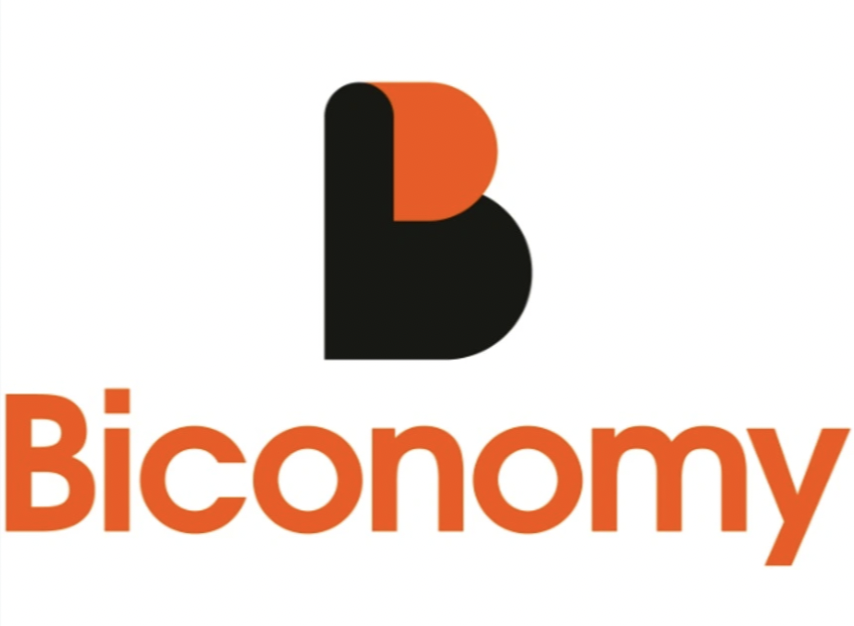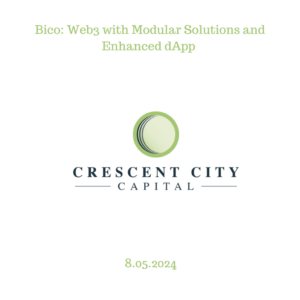Bico: Web3 with Modular Solutions and Enhanced dApp
By Jenny Yao | Crescent City Capital Market Analyst Intern
Introduction
Biconomy is an underlying protocol that enhances the dApp experience. It significantly lowers the entry barriers for Web3 users, such as high gas fees, complex user experiences, complicated onboarding, and lack of interoperability. Biconomy’s token is already listed on top exchanges like Binance and OKX. Biconomy provides plug-and-play modular solutions for handling gas payments, transactions, and bridging functions for Web3 dApps.
In short, Biconomy is a blockchain project aimed at simplifying blockchain transactions and improving user experience, making decentralization accessible to everyone. With Biconomy, people can create customized transaction interfaces and use smart contract wallets on a unified platform. Developers can create unique transaction processes and UI/UX by dragging icons in a modular way, leveraging Biconomy’s powerful API/SDK and modular tools.
Biconomy introduces the concept of modularity based on the same account, allowing developers to drag and drop necessary elements, thus enhancing wallet composability. Through professional gas optimization and transaction management, this protocol can reduce gas fees by up to 40%.

Key Products
1.) Meta-Transactions
In Biconomy, meta-transactions enable gasless transactions using Biconomy’s SDK, Mexa. Mexa is a JavaScript-based application that can be easily integrated into decentralized applications. With Mexa, developers can leverage the EIP-2771 standard implementation or custom implementations to enable gasless transactions in their dApps. Biconomy achieves this through a technique called meta-transactions (meta-txs). In this technique, Biconomy relayers pay the required gas fees, and at the end of the month, the dApp developers reimburse these fees. This helps Biconomy lower the entry barriers for dApp users.
The Biconomy relay network consists of two elements: executors and validators. Executors operate relay nodes and are responsible for completing various meta-transactions on the respective blockchains. Validators ensure the network’s security by verifying the transactions executed by the executors. Therefore, Biconomy maintains a high level of security.
2.) Hyphen transactions
Known as cross-chain transfers, enable fast and inexpensive token swaps across different blockchains, enhancing Biconomy’s protocol interoperability for dApps. Utilizing Biconomy’s executors and validators, Hyphen addresses Layer 2 to Layer 2 fund transfers with liquidity pools on each chain, earning fees for liquidity providers. Supporting most major public chains, Hyphen periodically rebalances liquidity pools to improve capital efficiency. This feature allows applications to read and write data within chains, boosting composability and cross-chain interoperability. Many projects have adopted Hyphen, improving user experience, accelerating onboarding, and contributing to the flourishing multi-chain ecosystem.
Biconomy’s modular smart accounts Layer, compliant with the ERC 4337 standard, can integrate with any Paymaster and Bundler services. To lower the development barrier, Biconomy offers modularly developed smart accounts, allowing developers to create accounts by simply dragging and dropping individual modules using Biconomy’s UX plugin. Biconomy provides multiple account creation methods, including fingerprint recognition, social media login (e.g., email registration), and authorization through EOA. This initiative helps both users and developers adopt wallets with minimal barriers, significantly reducing the entry threshold.

Market Analysis

Biconomy (BICO) is currently trading around $0.20, with recent price action showing volatility within key support at $0.18–$0.19 and resistance at $0.22–$0.24. The short-term moving average (50-day MA) is trending below the long-term moving average (200-day MA), signaling potential bearish sentiment. The Relative Strength Index (RSI) and MACD are critical for assessing overbought or oversold conditions and trend reversals. Volume trends should be monitored for confirmation of price movements, while chart patterns and volatility indicators like Bollinger Bands can offer additional insights. Staying informed on market sentiment and external news is essential for a comprehensive view of BICO’s potential movements.
Given the current bearish sentiment indicated by the short-term moving average being below the long-term moving average, it may not be the best time to invest in Biconomy (BICO) without additional positive signals, such as a bullish MACD crossover or signs of reversal in the RSI. Competitors include Polygon (MATIC), which focuses on Ethereum scaling solutions; Optimism and Arbitrum, both providing Layer 2 scaling to enhance transaction speed and reduce costs; StarkNet, utilizing zk-rollups for scalability and privacy; and zkSync, which offers zk-rollup technology for scaling Ethereum while maintaining security and decentralization.
Summary
From a traditional finance perspective, having a low-barrier, secure, and interoperable wallet account is crucial, which is why Biconomy is included in the RWA (Real World Assets) concept. We can see many well-known projects integrating with the Biconomy protocol to enhance user experience. Notably, projects from the traditional financial world, such as the one supporting JPMorgan’s first stablecoin deposit transaction, are adopting Biconomy. Additionally, Biconomy is supporting top industry projects, like saving dYdX Traders $738,000 in gas fees.
Biconomy has raised a total of $10.5 million, with $9 million of that raised in 2021. This funding round was led by DACM and Mechanism Capital, with participation from Coinbase Ventures, Huobi Ventures, Bain Capital, NFX, Ledgerprime, Huobi Innovation Labs, Primitive Ventures, Aave founder Stani Kulechov, FalconX co-founder Prabhakar Reddy, Flashbots co-initiator Stephane Gosselin, and Hasu from Uncommon Core.

